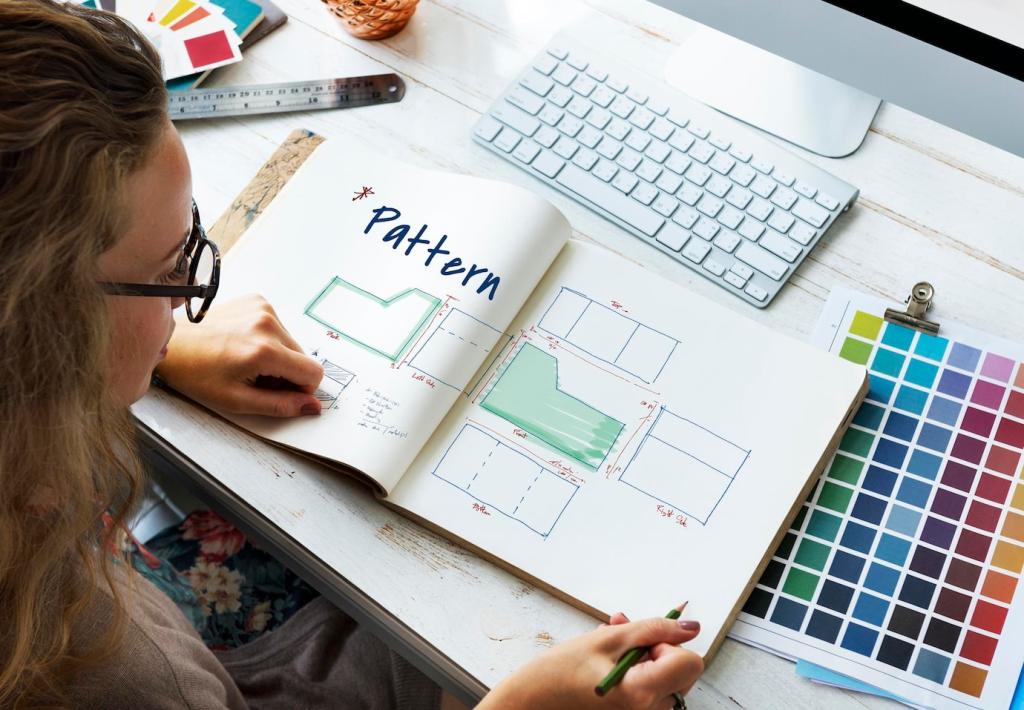Write Spaces People Feel: Target Audience Analysis for Interior Design Copywriting
Selected theme: Target Audience Analysis for Interior Design Copywriting. Step into the minds behind the rooms—discover how precise audience insights turn mood boards into magnetic words that win trust, guide decisions, and inspire inquiries.

Map the Personas Behind Every Room
01
Age and income help, but desires, routines, and aesthetic triggers guide storytelling. Probe what readers save on Pinterest, their morning habits, and why they favor light, texture, or storage solutions over pure style statements.
02
Open kitchens hint at community, not just trends. A mudroom suggests kids, pets, or outdoor hobbies. Let these clues inform copy about durability, acoustic comfort, and the emotional ease of clutter-free transitions.
03
Clients reveal persuasive language when you ask about frustrations and little joys. Capture exact phrases—“soft morning light,” “toy overflow,” “hotel serenity”—then echo them in headlines, captions, and calls to action that feel intimately understood.

Social Listening Where Design Dreams Live
Scan conversations on Instagram, Houzz, and niche Reddit threads. Track recurring questions about budgets, materials, and timelines to shape FAQs, microcopy, and case-study angles your exact audience will finally recognize as answers.

Search Intent and Seasonal Curiosity
Analyze keywords revealing purpose: informational, comparison, or transactional. Notice seasonal spikes in outdoor living or nursery planning, and schedule content that meets needs precisely when intent and emotion run highest.
Turn Insights into Voice, Tone, and Rhythm
Voice Boards to Match Style Boards
Pair palettes with brand voice attributes: serene, tactile, luminous, grounded. Assign linguistic equivalents—short sentences for modern minimalism, layered metaphors for maximalism—so copy mirrors the design’s emotional temperature beautifully.

Segment Messages for Interior Niches
Replace adjectives with provenance: artisans, provenance of stone, custom millwork lead times, acoustics. Feature discreet testimonials and process transparency. Invite dialogue by asking readers which rooms compose their personal sanctuary.


Segment Messages for Interior Niches
Stress wipeable finishes, rounded edges, and flexible zones that evolve. Use stories about bedtime reading nooks and stress-free snack stations. Encourage comments sharing small frustrations you can solve next post.
Storytelling Anchors That Convert Browsers to Bookings
The Five-Beat Transformation Arc
Problem, constraint, insight, intervention, outcome. Describe how morning chaos became calm through storage choreography and light control. Close with a subtle invitation to imagine their own five-beat story beginning today.
Sensory Details That Stick
Write for touch and sound as much as sight. Mention the hush of wool rugs, the cool honesty of terrazzo, cabinet doors that sigh closed. Ask readers which sensory detail defines comfort for them.
Before/After Captions with Strategy
Avoid vague excitement. Name the decision—swapping top cabinets for reeded glass to expand sightlines—and the measured effect. Encourage subscribers to request caption breakdowns for spaces they are planning this season.
Lead with a benefit-driven headline, subhead with audience-specific proof, then a crisp teaser paragraph. Break ideas into scannable blocks and end each with an action that feels like the next natural step.

Signals That Matter More Than Likes
Watch time on page, click-to-inquiry rate, scroll depth near pricing FAQs, and case-study completion. Invite subscribers to join a feedback circle where we share drafts and learn from real reactions.
A/B Tests with Real Hypotheses
Test tones, benefits, and proof order. Decide in advance what success means and stick to it. Afterwards, publish learnings so the community benefits and suggests fresh variables to explore together.
